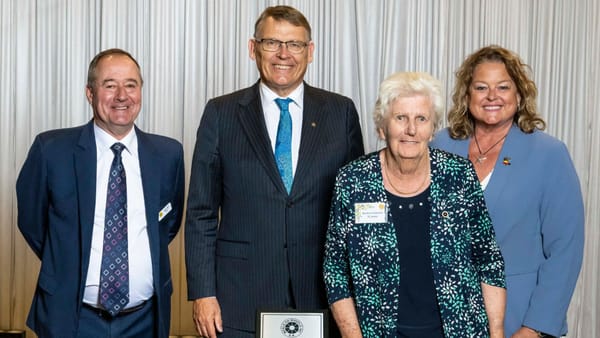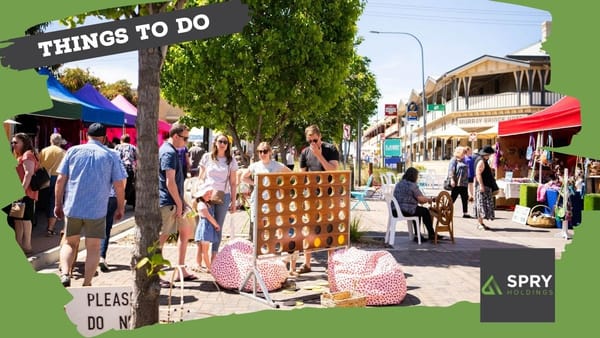Celebrations planned as Murray Bridge’s rail bridge turns 100
Both the local historical association and the council will hold events for the centenary in November 2025.

This story is free to read. Help Murray Bridge News tell more stories like this by subscribing today.
A hundred years ago next month, a crowd gathered near the Bridgeport Hotel for a special celebration.
The opening of the first bridge across the River Murray, almost 50 years earlier, had made Mobilong a place of strategic importance to South Australia and the nation.
But the second bridge gave the town something more, including a new name: Murray Bridge.
Photos taken on November 13, 1925 show hundreds of people gathered along the railway line to watch a steam locomotive pull Premier John Gunn’s official train through a ribbon and over the bridge to the east side, testing it out for the first time.
A report in The Observer estimated the crowd at as many as 5000 in number – about eight times the population of the town.
No more would locals be forced to give way at either end of the road bridge with their horses, wagons or automobiles, waiting for trains to pass along the roadway.
No longer would workmen have to keep reinforcing the old bridge to cope with the heavy train traffic, either.
The new bridge would be safer and more efficient.
This was real, 20th-century industry.
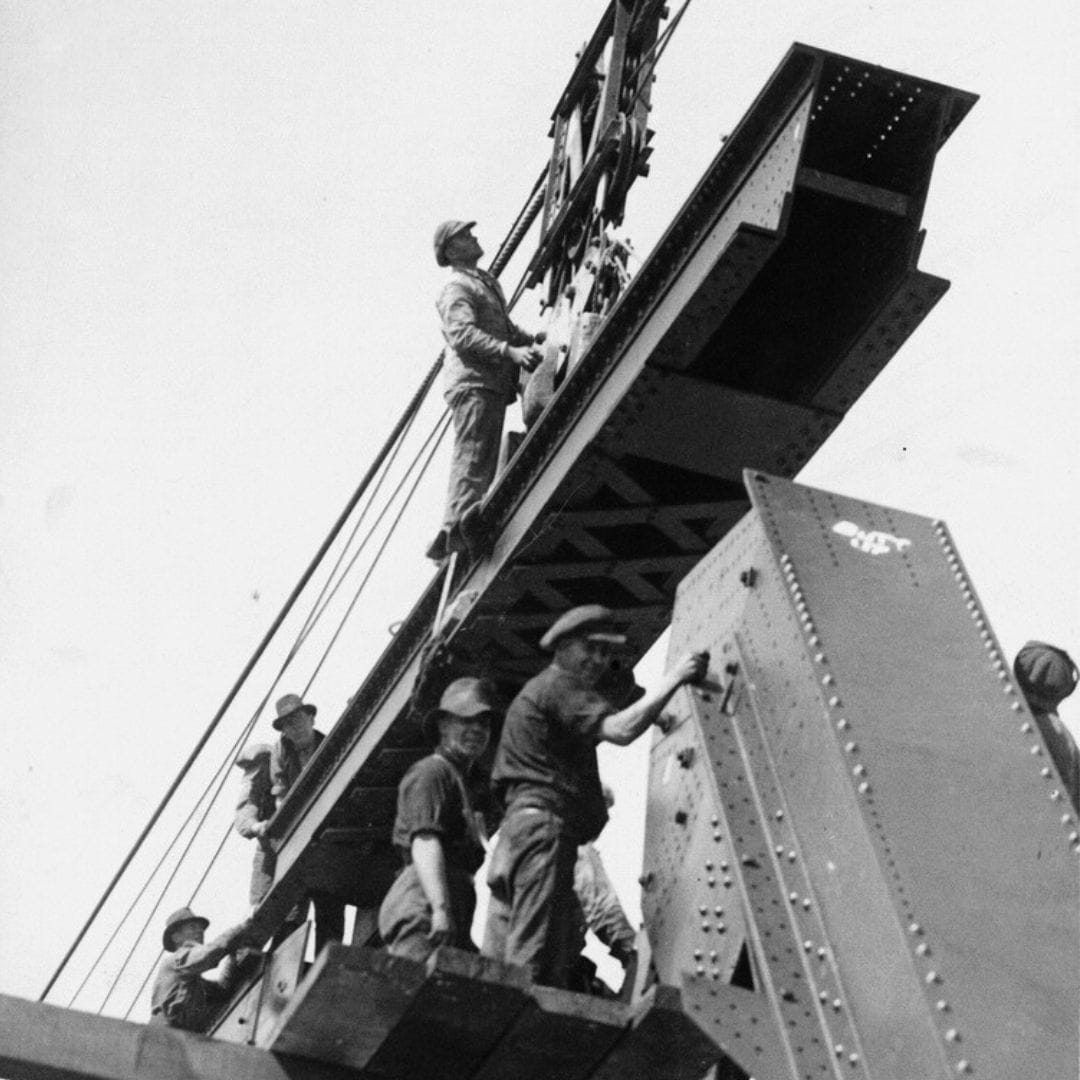
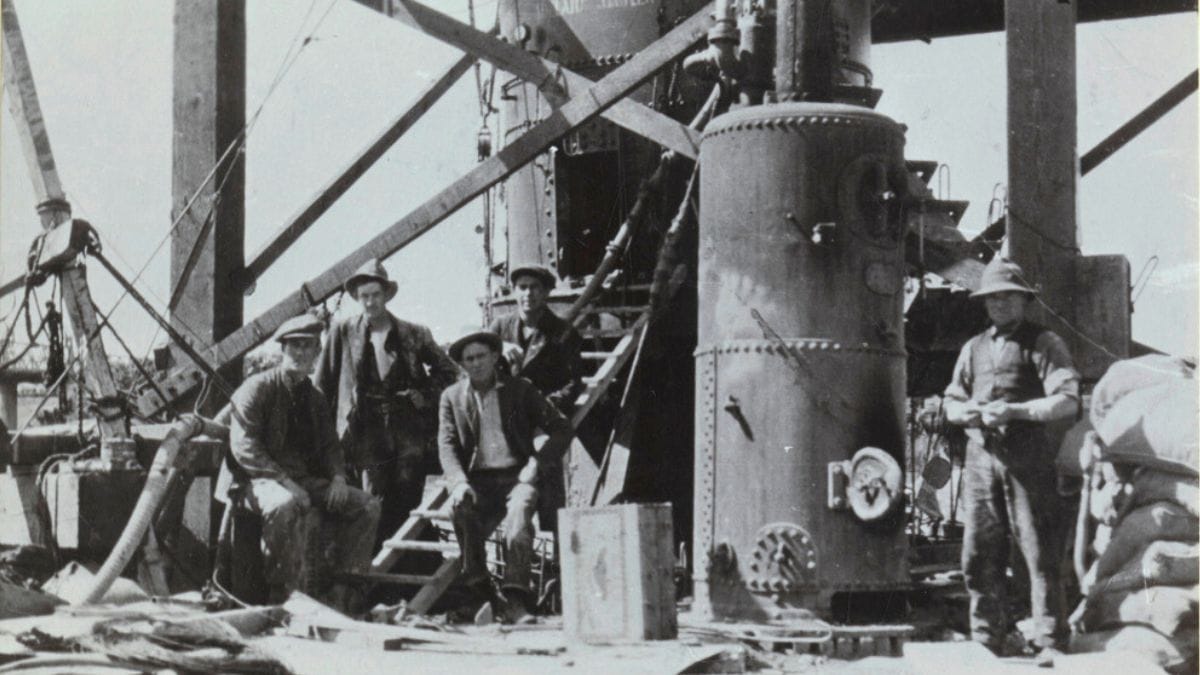
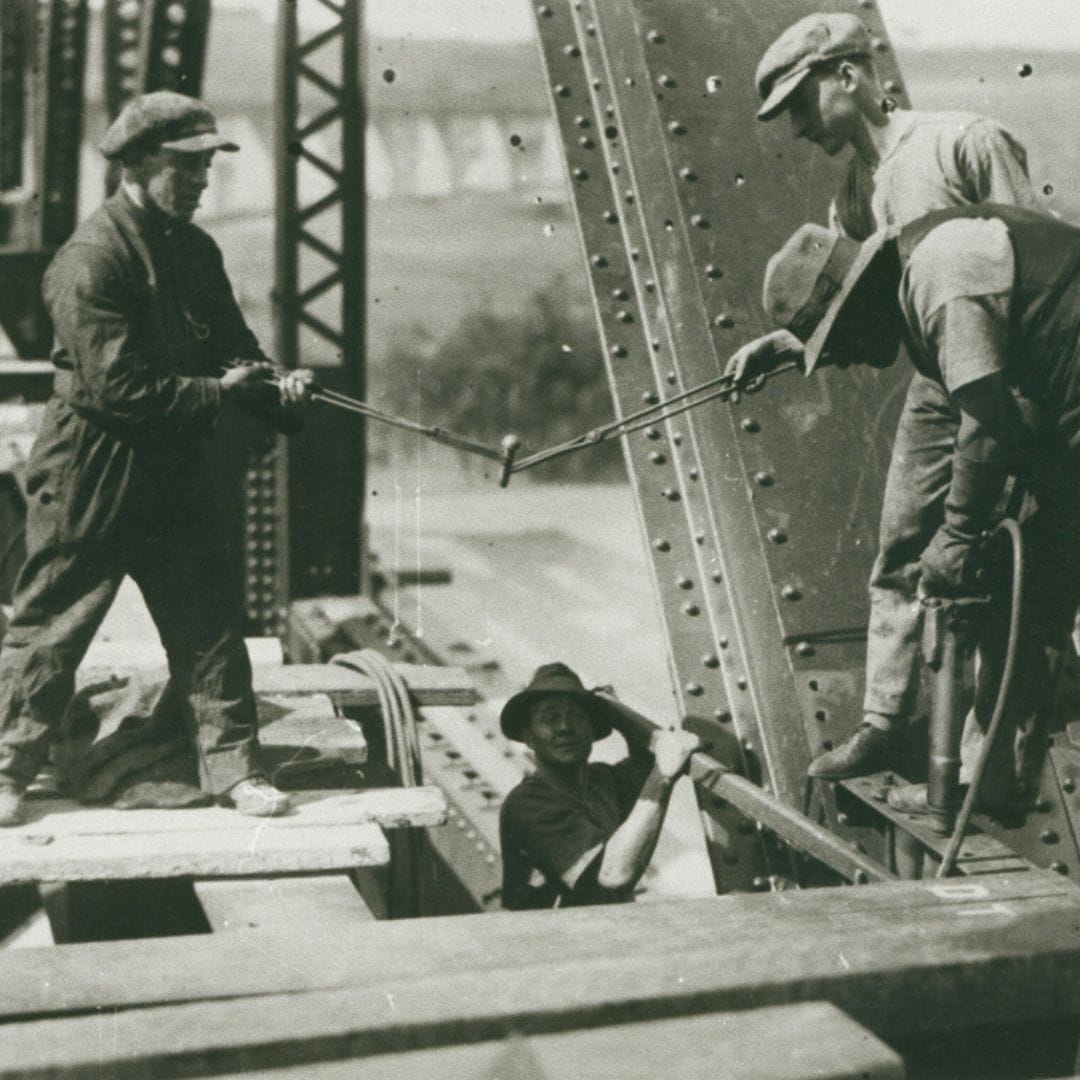
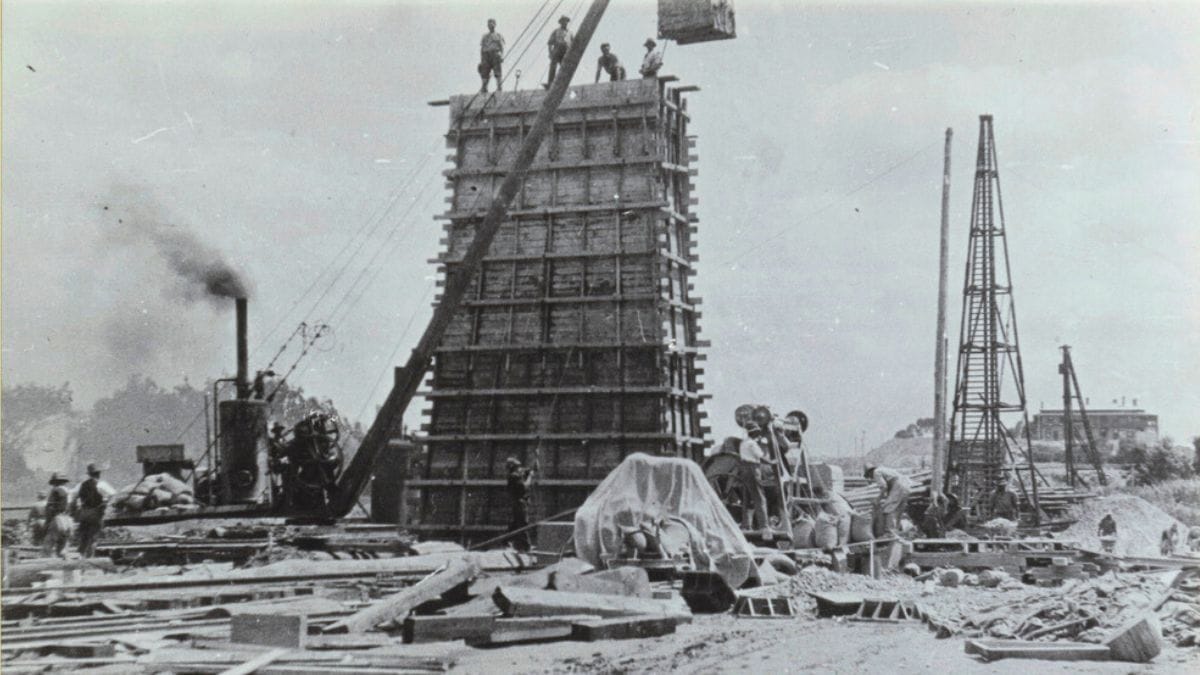
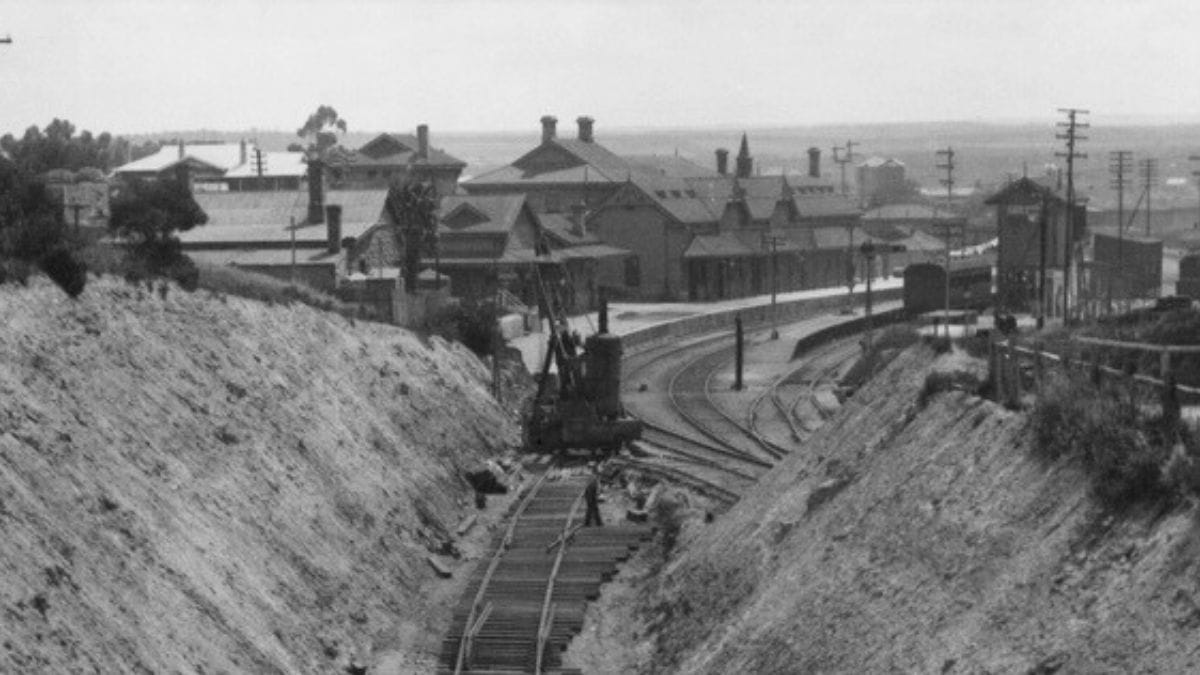
Photos taken at the time show workmen lowering a girder into place, setting up a boiler, riveting, building the enormous supports which would hold up the bridge, and digging the cutting and tunnel which pass beneath Bridge Street. Photos: State Library of South Australia (B-3157, PRG-1258-2-1819, B-3161, PRG-1258-2-1825, B-3154).
Exhibition and afternoon tea will honour bridge’s centenary
A century later, two events are being planned to celebrate the centenary of the railway bridge’s opening.
Members of the Murray Bridge and District Historical Society have put together an exhibition of photos of the bridge throughout its construction and life, many of them unseen for decades.
It will be open in the Railway Institute Building near the Round House from 10am to 4pm on Saturday, November 15, immediately before the Murray Bridge Christmas Parade.
The bridge’s opening in 1925 had been an important event that deserved to be remembered, local historian Ken Wells said.
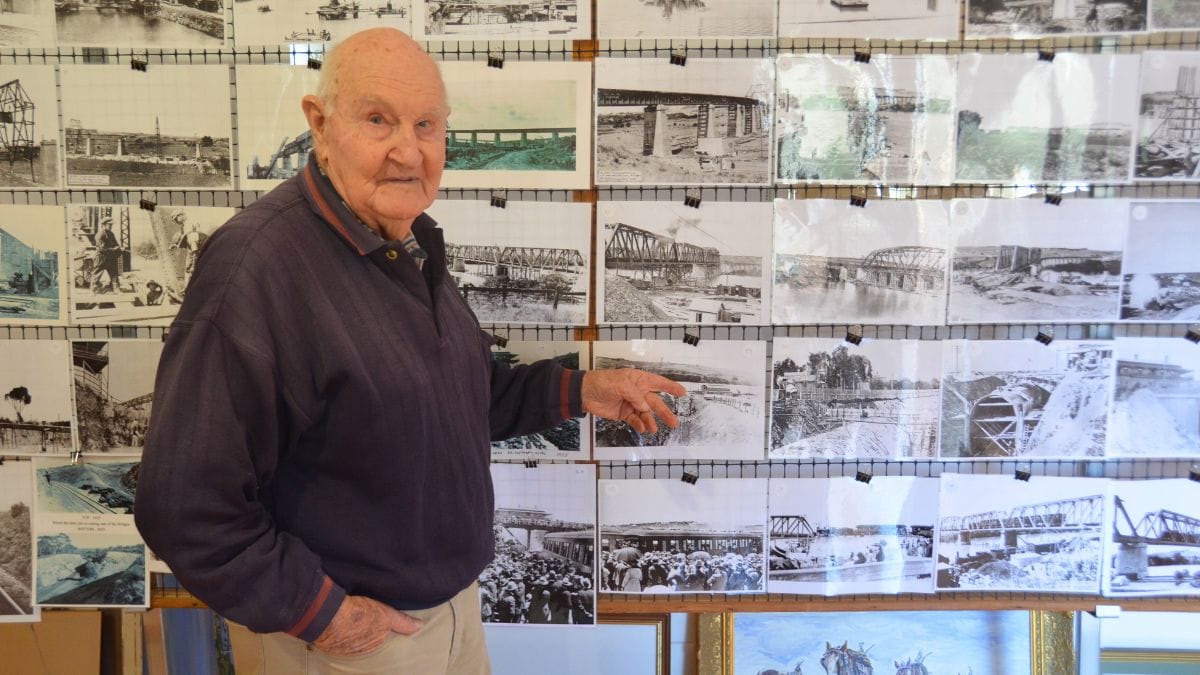
“All the freight from Darwin to Melbourne, from Perth to Melbourne and vice versa, that all came through here,” he said.
“That bridge has stood for 100 years … and it’s what the town takes its whole identity from, too.
“You’ve got to acknowledge it in some way.”
Keven Lukey and other members of the society spent six weeks pulling together about 140 photos to hang on the institute’s walls.
Funds raised through a $5 cover charge will help the society’s volunteers continue to preserve their priceless records of Murray Bridge’s history, and hopefully publish more of them in a planned book of photos.

Meanwhile, the Murray Bridge council will host an official celebration at the RSL at 2pm on Thursday November 13.
Afternoon tea will be provided and memorabilia will be put on display.
Unfortunately, councillors and staff were unable to convince higher authorities to let them permanently install lights on the bridge in time for the centenary.
The council had spent years advocating for a permanent light display.
It asked the Australian Rail Track Corporation for permission in 2017, and again last year, but the ARTC shot the idea down due to concerns about the lights shining in train drivers’ eyes.
The bridge has been lit up temporarily a couple of times, for New Year’s Eve, but it looks like that is as close as we’ll get any time soon.
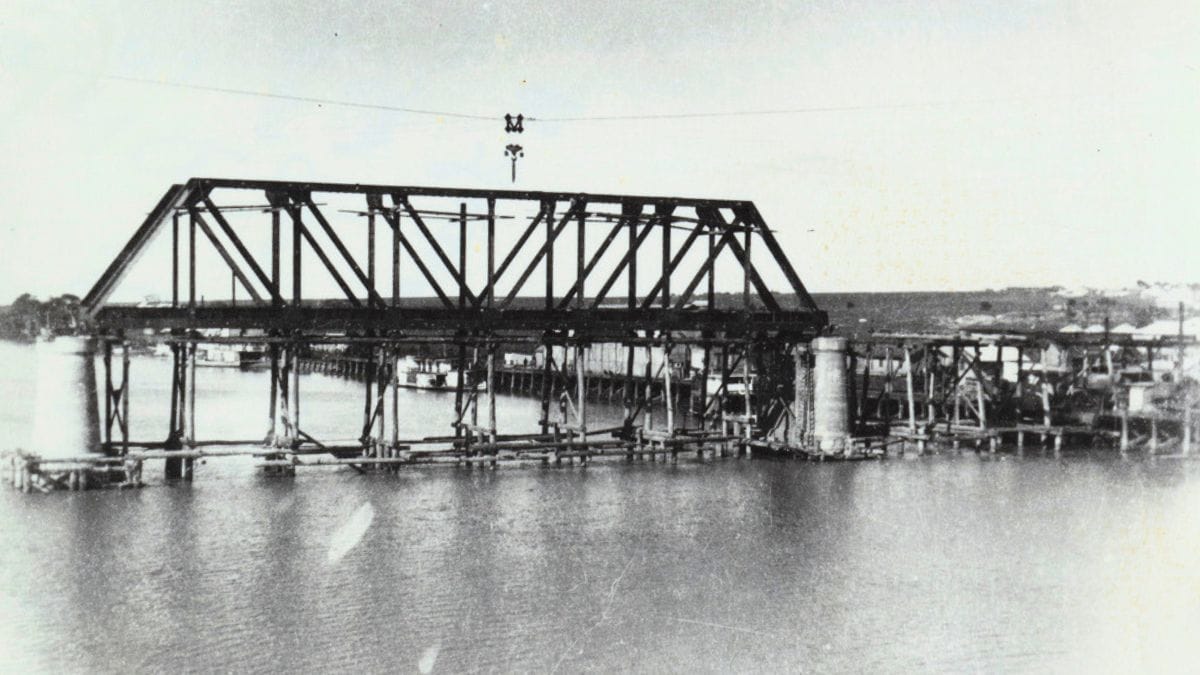
Harder, better, faster, stronger
The 1925 rail bridge was described as “the strongest in the Commonwealth” at the time of its opening.
Its foundations went down to bedrock, 85 feet below river level.
Workers had to pass through an airlock and work in a pressurised atmosphere, maintained by a steam engine, to sink the concrete into the earth.
It took 18 months for more than 200 men to put together the 1540 tons of steel and 12,000 cubic yards of concrete used in its construction.
The project cost £216,000 – the equivalent of $21.6 million in today’s money.
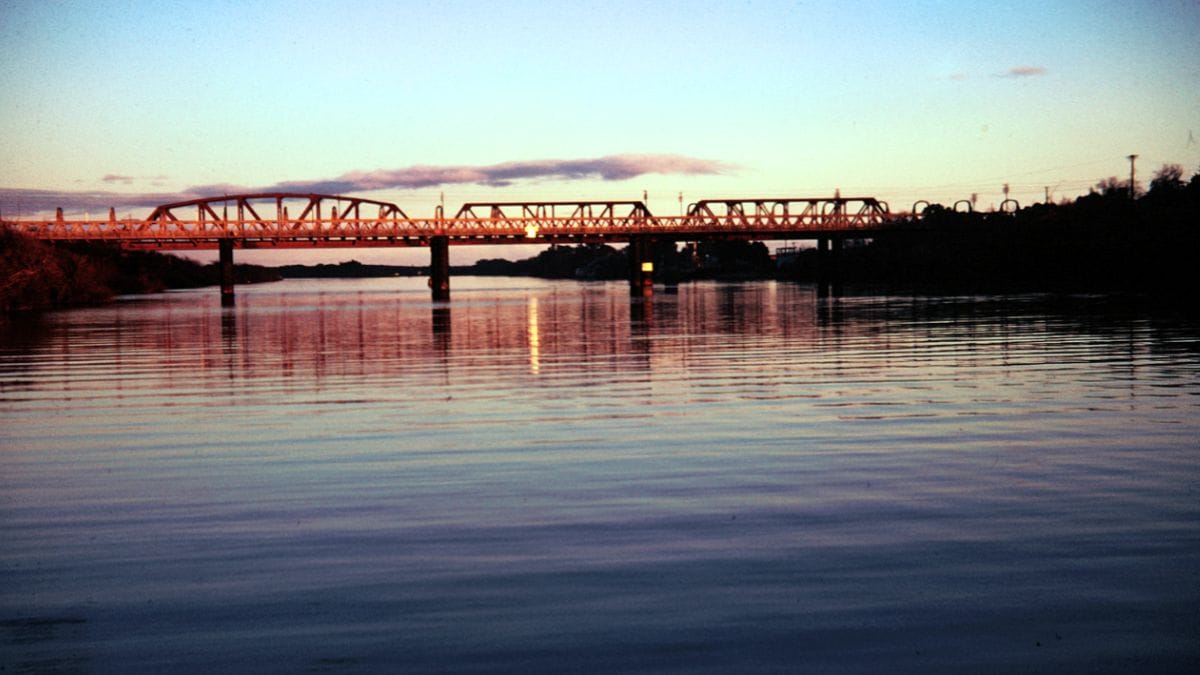
The spending was much needed, though.
The old bridge had been literally crumbling under the weight of up to 30 trains per day.
Some of its supports had subsided by a full three feet in the half-century since its construction, The Bunyip reported at the time, and “three men are constantly engaged in lifting and bolting the rails and attending to the underwork”.
Is the arched section of the bridge meant to be in the middle?
It’s a common question from visitors or newcomers to Murray Bridge: why does the rail bridge have an arched span on one side, with two flat spans next to each other? The answer: it’s meant to be like that. The deepest part of the River Murray channel runs beneath the arched span, which is 55 feet longer than the others.
Oddly enough, the bridge’s opening almost happened without any fanfare at all.
The Railways Commissioner had originally decided there should be no opening ceremony for the new bridge.
State authorities only relented after protests from the Murray Bridge Progress Association.
- Attend the exhibition: Visit the Railway Institute Building at 397 Railway Terrace, near the Round House, from 10am-4pm on November 15. Entry will cost $5.
- RSVP to the council event: events.humanitix.com/murray-bridge-rail-bridge-100-year-celebration.
- See more photos: Century-old footy trip photos show Murray Bridge as it was in 1925


